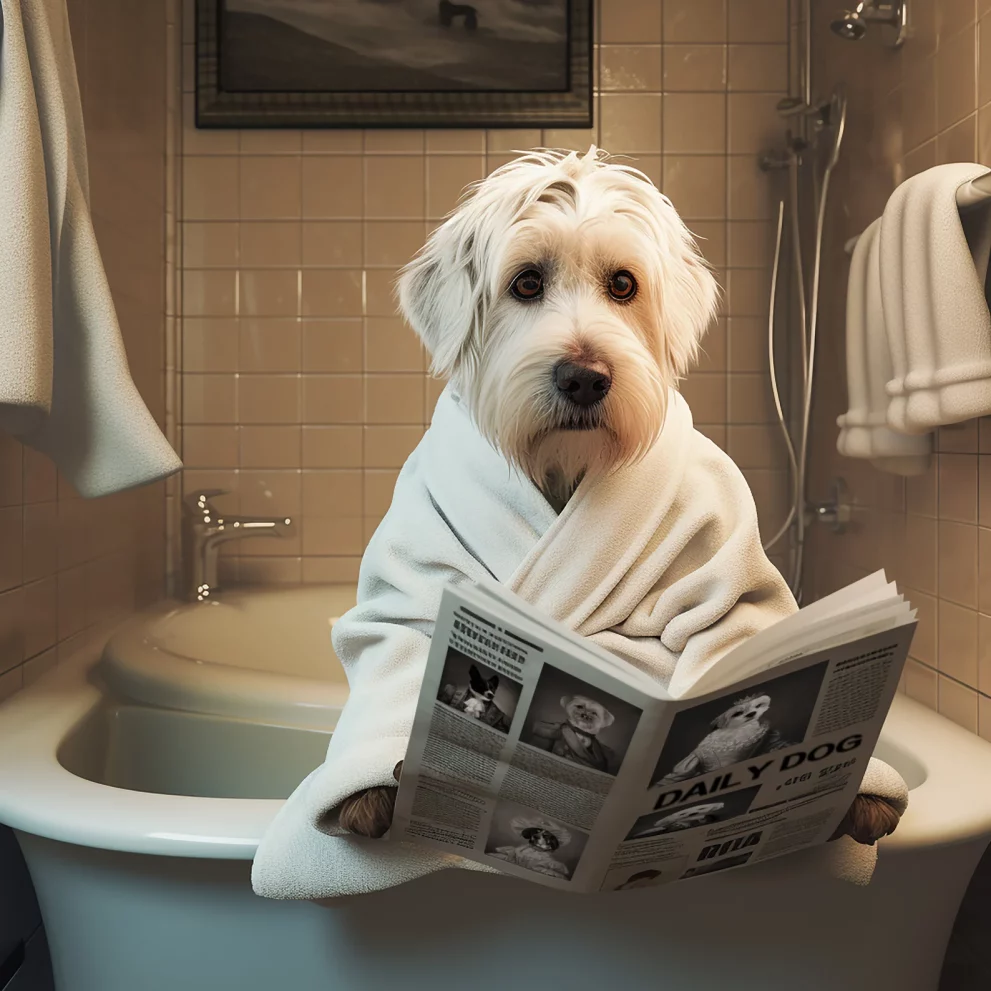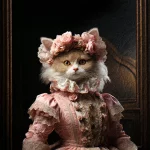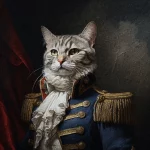Commissioning a portrait is a heartfelt way to celebrate and honor the life of a beloved pet, but what if you want to commission a portrait of a pet you don’t own?
Whether it’s a thoughtful gift for a friend, a tribute to a cherished animal that has passed away, or a celebration of a special milestone, creating a meaningful portrait requires careful consideration and planning.
This guide will walk you through the essential steps for commissioning a portrait of a pet you don’t own, helping you navigate the process from selecting the right artist to ensuring the final artwork perfectly captures the essence of the pet.
By understanding the purpose behind the portrait, researching and communicating with the artist, and managing all the details with care, you can create a beautiful and lasting tribute that resonates deeply with the pet’s owner and celebrates the special bond they share with their furry companion.
Understand the Purpose and Scope
When commissioning a pet portrait that you don’t own, understanding the purpose and scope is the first step to ensure that the artwork is both meaningful and appropriate.
Clarifying why you’re commissioning the portrait will help you make informed decisions throughout the process, from selecting the artist to communicating the pet’s characteristics.
Purpose Examples
- Gift for a Friend/Family Member: If the portrait is intended as a gift, it’s crucial to tailor the artwork to the recipient’s preferences. Consider the recipient’s taste in art styles—some people might appreciate a traditional, realistic portrayal, while others might prefer a more abstract or whimsical representation. Additionally, if the pet is a companion animal of someone close to you, gathering information about the pet’s personality and quirks will help in creating a portrait that resonates with both the pet and the recipient.
- Memorial Portrait: A memorial portrait serves as a tribute to a beloved pet that has passed away. In this case, the portrait can provide comfort and a way to honor the pet’s memory. Collecting detailed photos and descriptions of the pet can help the artist capture the pet’s likeness and character accurately. You may also want to include elements that reflect the pet’s life or interests, such as their favorite toys or settings.
- Celebration of a Pet’s Milestones: For celebrating significant milestones like an adoption anniversary, a pet’s birthday, or a remarkable achievement, the portrait can highlight a specific moment or characteristic that marks the occasion. This could involve capturing a favorite activity or a particularly joyful moment in the pet’s life. This purpose often requires a collaborative approach with the pet’s owner to ensure that the portrait reflects the significance of the milestone.
Scope Considerations
- Detail Level: Determine how detailed you want the portrait to be. A highly detailed portrait will require more time and possibly cost more, but it will provide a more lifelike representation. Decide whether you want the portrait to include just the pet or if you’d like to include elements of their environment or companions.
- Size and Format: The size of the portrait can influence the impact it has. Larger portraits often make a stronger visual statement, but they may be more challenging to display. Consider the space where the portrait will be placed and choose a size that complements it. Additionally, think about whether you want the portrait to be framed or left as a standalone piece.
By thoroughly understanding the purpose and scope of the portrait, you can effectively communicate your vision to the artist and ensure that the final piece is a cherished and meaningful artwork.
Research Artists
Finding the right artist is a crucial step in the commissioning process. The artist’s style and reputation will significantly impact the final outcome of the portrait. Conducting thorough research will help you choose an artist who can bring your vision to life effectively.
Artist’s Style
- Realistic: If you prefer a lifelike portrayal of the pet, look for artists known for their realistic techniques. Realistic portraits often require an artist to capture intricate details such as fur texture, facial expressions, and subtle color variations. Review the artist’s portfolio to see examples of their previous work and ensure their style aligns with your expectations.
- Abstract: For a more modern or abstract approach, seek out artists who specialize in these styles. Abstract portraits can offer a unique interpretation of the pet, focusing on color, shape, and form rather than a literal representation. This style can be particularly striking and memorable, but it requires a clear understanding of the artist’s vision to ensure it resonates with you and the pet’s owner.
- Cartoonish/Whimsical: If you’re looking for a playful or humorous representation, artists who specialize in cartoonish or whimsical styles might be the best fit. These portraits often emphasize exaggerated features and colorful, imaginative elements. They can capture the pet’s personality in a fun and light-hearted way, making them an excellent choice for gifts or celebratory occasions.
Artist’s Reputation
- Reviews and Testimonials: Check for reviews from previous clients to gauge the artist’s reliability and quality of work. Positive testimonials can provide insights into the artist’s professionalism, communication skills, and ability to meet deadlines.
- Social Media and Website: Explore the artist’s online presence to view their most recent work and updates. Social media platforms and personal websites often showcase a range of projects and client interactions. This can help you assess the artist’s current style and the breadth of their experience.
When selecting an artist, ensure their style and reputation align with your vision for the portrait. This will help in achieving a final piece that meets your expectations and resonates with the pet’s owner.
Gather Reference Material
Providing detailed reference material is essential for the artist to create an accurate and meaningful portrait. Since you don’t own the pet, you’ll need to rely on the pet’s owner or existing photos. Here’s how to effectively gather and present this material:
Requesting Photos
- High-Quality Images: Request high-resolution images that clearly show the pet’s features. Photos should be well-lit and free of obstructions. Ideally, gather images from different angles, including close-ups of the face, body, and any distinctive features. The more comprehensive the photo collection, the better the artist can capture the pet’s likeness.
- Personal Moments: Ask for photos that capture the pet’s personality and typical expressions. For example, images of the pet playing with their favorite toy or interacting with family members can provide insights into their character and behavior.
Additional Information
- Personality Traits: Include detailed descriptions of the pet’s personality traits, such as their typical expressions, behaviors, and habits. This information helps the artist understand how to convey the pet’s character in the portrait. For instance, if the pet is known for their playful nature, the artist might incorporate elements that reflect this trait.
- Background Information: Provide context about the pet’s life and significance. For a memorial portrait, include details about the pet’s history and special moments. For a celebratory portrait, share information about the milestone being celebrated. This background information can inspire the artist and help them create a portrait that truly honors the pet.
By providing comprehensive reference material and detailed descriptions, you enable the artist to create a portrait that accurately and meaningfully represents the pet.
Discuss the Details with the Artist
Once you’ve chosen an artist and gathered the necessary reference material, it’s important to discuss the project in detail. Clear communication with the artist will ensure that the portrait meets your expectations and is completed on time.
Size and Medium
- Size: Decide on the dimensions of the portrait based on the space where it will be displayed and your personal preference. Larger portraits can make a more dramatic statement but may require more time and cost. Smaller portraits can be more versatile and easier to place in various settings.
- Medium: Choose the medium that best suits the style and purpose of the portrait. Common mediums include oil paints, watercolors, graphite pencils, and digital formats. Each medium has its own characteristics and can affect the final appearance of the portrait. Discuss your preferences with the artist and consider their expertise with different mediums.
Timeline
- Completion Date: Agree on a realistic timeline for the completion of the portrait. If the portrait is intended as a gift or for a specific occasion, communicate this to the artist to ensure it is finished in time. Be mindful that more complex portraits may require additional time.
Price and Payment
- Cost Estimate: Request a detailed cost estimate that includes all potential expenses, such as the artist’s fee, framing, and shipping. This will help you avoid unexpected costs and ensure that the budget aligns with your expectations.
- Payment Terms: Discuss the payment terms with the artist, which may involve an upfront deposit and the balance upon completion. Clarify the payment methods accepted and any conditions for refunds or cancellations.
By discussing these details with the artist, you set clear expectations and ensure a smooth commissioning process.
Review the Artist’s Work
Before finalizing the commission, it’s important to review the artist’s work and provide feedback. This step allows you to make any necessary adjustments and ensure that the portrait meets your vision.
Feedback Tips
- Specific Changes: If the preliminary draft or sketch requires adjustments, be specific in your feedback. Clearly communicate any changes you’d like to see, whether it’s modifications to the composition, color, or details.
- Constructive Criticism: Provide constructive criticism that helps the artist understand your preferences and make improvements. Be respectful and appreciative of their effort, while clearly expressing your vision.
Approval Process
- Draft Review: Review the draft carefully to ensure it aligns with your expectations. This is your opportunity to make any changes before the artist completes the final portrait.
- Final Approval: Once you’re satisfied with the draft and any adjustments have been made, provide final approval for the artist to proceed with completing the portrait.
By actively participating in the review process, you help ensure that the final portrait is a true reflection of your vision and the pet’s character.
Finalizing the Commission
After approving the draft, the artist will complete the portrait. Finalizing the commission involves confirming delivery details and ensuring that all aspects of the project are settled.
Final Delivery
- Framing: Discuss whether the portrait will be framed or if you need to arrange framing separately. Framing can enhance the presentation and protect the artwork, so consider choosing a style that complements the portrait and the space where it will be displayed.
- Shipping/Delivery: If the artist is responsible for shipping the portrait, confirm the shipping method, cost, and estimated delivery date. Ensure that the portrait will be packaged securely to prevent damage during transit.
Receiving the Portrait
- Inspection: Upon receiving the portrait, inspect it carefully to ensure it meets your expectations. Check for any issues with the quality or accuracy of the artwork. If there are any concerns, address them with the artist promptly.
- Feedback and Payment: Provide feedback to the artist and settle any remaining payment if applicable. Express your appreciation for their work and discuss any final details, such as care instructions for the portrait.
By finalizing the commission thoughtfully, you ensure a smooth and satisfactory completion of the project.
Presenting the Portrait
When the portrait is completed, consider how you will present it, especially if it’s a gift or a tribute. A thoughtful presentation can enhance the impact and significance of the portrait.
Presentation Ideas
- Unveiling: Plan a special moment for presenting the portrait, such as a surprise reveal or a celebratory event. Consider creating a memorable experience by sharing the story behind the portrait and its significance.
- Personal Touches: Include a handwritten note or card explaining the meaning behind the portrait and your appreciation for the recipient. Personal touches can add emotional value and make the presentation more meaningful.
Displaying the Portrait
- Placement: Choose a location where the portrait will be prominently displayed and appreciated. Consider the lighting and surroundings to ensure the portrait is showcased effectively.
- Care Instructions: If the portrait requires special care or maintenance, provide instructions to ensure it remains in good condition. This can include tips on cleaning, avoiding direct sunlight, or framing considerations.
By thoughtfully presenting the portrait, you enhance its emotional impact and ensure it is enjoyed and cherished by its recipient.
Follow-Up with the Artist
After the portrait has been completed and presented, it’s a good practice to follow up with the artist. This helps build a positive relationship and provides valuable feedback for future projects.
Post-Completion Communication
- Thank You Note: Send a thank you note or message expressing your appreciation for the artist’s work. Acknowledging their effort and talent can strengthen your relationship and encourage positive future interactions.
- Share Photos: If appropriate, share photos of the portrait in its new setting. This can be valuable for the artist’s portfolio and promotional efforts. It also allows you to celebrate the finished work and its impact.
Feedback for Improvement
- Constructive Feedback: Provide constructive feedback on your experience with the commissioning process. This can help the artist improve their services and enhance future projects.
By maintaining communication and expressing gratitude, you contribute to a positive experience for both yourself and the artist.
Ethical Considerations
When commissioning a portrait of a pet you don’t own, ethical considerations are important, particularly regarding the pet’s owner’s privacy and consent.
Consent and Respect
- Owner’s Permission: Always obtain permission from the pet owner before using their pet’s images or information. Respect their wishes regarding how the pet is portrayed and ensure they are comfortable with the commissioning process.
- Privacy Considerations: Be mindful of the pet owner’s privacy, especially if the portrait is intended for public display. Ensure that any personal information or details shared are handled respectfully and with the owner’s consent.
Ethical Practices
- Transparency: Be transparent about your intentions and the use of the portrait. Clear communication helps build trust and ensures that all parties are aligned with the project’s goals.
- Respectful Representation: Ensure that the portrait represents the pet in a respectful and accurate manner. Avoid any elements that could be seen as offensive or inappropriate.
By considering ethical aspects, you ensure that the commissioning process is conducted with respect and sensitivity toward the pet and its owner.
Conclusion
Commissioning a portrait of a pet you don’t own is a deeply meaningful gesture that requires careful consideration and thoughtful planning.
Whether the portrait is intended as a gift, a memorial, or a celebration, the process involves several key steps to ensure that the final artwork is both personal and impactful.
To begin with, understanding the purpose and scope of the portrait is crucial. Defining the reason behind the commission—be it a surprise gift, a tribute to a cherished pet, or a celebration of a milestone—guides every subsequent decision, from selecting the artist to finalizing the artwork’s details.
Choosing the right artist is a pivotal step.
Researching artists who specialize in pet portraits, evaluating their style and reputation, and reviewing their portfolios ensures that you find someone whose work aligns with your vision.
This careful selection process helps in achieving a portrait that truly captures the essence of the pet.
Gathering detailed reference material is essential, especially when you do not own the pet yourself.
High-quality photos and comprehensive descriptions of the pet’s personality and background provide the artist with the information needed to create an accurate and evocative portrait. This step enhances the likelihood that the final artwork will resonate with both you and the pet’s owner.
Effective communication with the artist cannot be overstated. Discussing details such as size, medium, timeline, and cost ensures that all parties are on the same page and that the portrait is completed to your satisfaction.
Providing feedback on drafts and finalizing the commission with clear expectations helps in creating a successful and satisfactory outcome.
Presenting the finished portrait thoughtfully adds an extra layer of significance to the artwork. Whether it’s through a special unveiling, a personal note, or careful placement and display, the way the portrait is presented can amplify its emotional impact and appreciation.
Following up with the artist, maintaining ethical considerations, and expressing gratitude ensure a positive experience throughout the commissioning process. Respecting the pet owner’s privacy and obtaining their consent are important to conduct the process with integrity and sensitivity.
In conclusion, commissioning a portrait of a pet you don’t own is a beautiful way to honor and celebrate a beloved animal. By approaching each step with care and attention to detail, you can create a lasting tribute that captures the pet’s unique spirit and brings joy to those who cherish them.
Through thoughtful planning, clear communication, and ethical practices, you ensure that the final portrait is a cherished work of art that holds deep personal significance.














